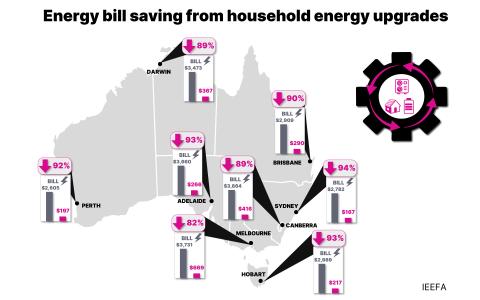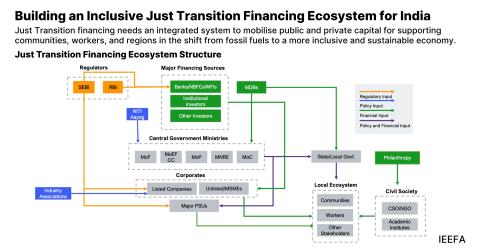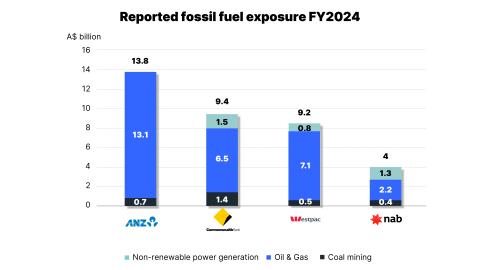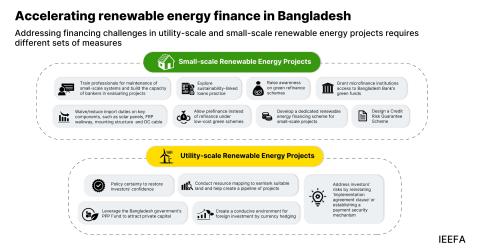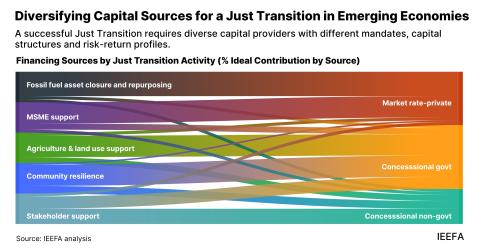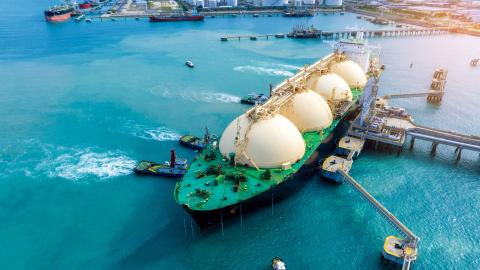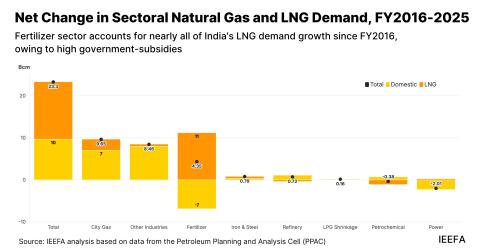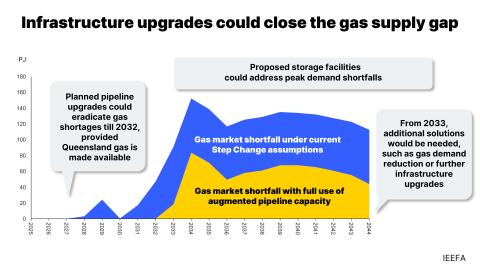IEEFA Asia: South Korea is behind the curve on power-generation policy
Sept. 6, 2018 (IEEFA) — South Korea is at an energy policy crossroads as the country’s state-owned power company and its two most important investors consider how to adapt to fast-moving changes in electricity generation, concludes a research brief published today by the Institute for Energy Economics and Financial Analysis.
The brief— “Korea’s Clean Energy Challenge: Time for a Check Up”—assesses South Korea’s 8th Basic Energy Plan and how it might shape a transition away from conventional coal-fired power generation.
“Progress by Korea’s leading companies, financial institutions and investors will inevitably define how quickly Korea can transition toward clean energy,” wrote the author, Melissa Brown, an IEEFA energy finance consultant. “For the 8th Plan to have real impact, it will be critical for Korea Electric Power Company (KEPCO), South Korea’s 51% government-owned power company, and its key investors, the National Pension Service (NPS) and the Korea Development Bank (KDB) to play a leading role in pulling Korea’s other pensions and banks in a greener direction.”
Environmental, social and corporate government issues rise to the fore.
The test of a policy initiative as significant as the 8th Plan is whether the institutions that must change to meet stakeholders’ goals are up to the challenge,” Brown added. “Crucially, do they have the governance disciplines— and commitment to transparency— needed to ensure that all the key players have the information they need to manage the risks and seize the right opportunities?”
Brown suggested Korea is lagging trends that are driving change in rival economies worldwide.
“Having the right information matters because Korea’s regional and global competitors are embracing new clean energy technologies at an accelerating pace, which raises questions about whether key Korean companies and institutions can keep up with their global peers,” she wrote.
And while the 8th Plan is a “crucial step” toward transition, Brown said it is only a beginning.
“It is not enough, especially in a region where power market realities are shifting so dramatically.”
The brief describes how the environmental, social and corporate governance issues stand to shape policy and how investors can monitor progress in three key areas:
- Board skill mix and tenure: “Based on information in KEPCO’s 2018 sustainability report, a small but positive improvement in board composition is evident with the inclusion of one independent director with renewable energy experience. This is a modest but positive step given the expected increase in capital spending linked to renewables. KEPCO should expect to be asked which board members are responsible for overseeing the company’s climate risk.”
- Improved key performance indicators and realistic targets: “At a time when management is balancing profitability pressures with important investment decisions that will shape KEPCO’s medium-term transition potential, it would make sense for stakeholders to have a clearer sense of management’s strategic priorities and any potential trade-offs that may influence decision-making about stated goals.”
- More coordination between domestic and overseas strategy development: “One obvious disconnect in KEPCO’s strategy discussions emerges in the disclosures related to the company’s overseas activities. KEPCO, like its Chinese and Japanese counterparts, continues to view overseas markets as a profit opportunity even as the economics of traditional baseload projects are eroding and political risk on the ground is rising. The narrative of profitable power technology exports ignores obvious questions concerning the long-term profitability of large-scale fossil-fuel projects in developing power markets that will inevitably be repriced as cheaper, deflationary renewables gain market access.”
Brown said such questions are pressing “because 2019 promises to be a year of heightened engagement by investors with KEPCO” and because of the company’s participation in the Climate Action 100, a global initiative whose 289 participating investors from 29 countries collectively manage US$30 trillion in assets.
“While the largest global investors will be seeking better answers from KEPCO on climate-related issues, it is natural to ask how Korea’s leading pension fund, NPS, will be enhancing its engagement with KEPCO,” Brown wrote. “Stakeholders will benefit if NPS’ responsible investment team, which was created in 2013, is able to enhance its risk management capacity by adopting a more active stewardship stance. As the third largest global pension fund with many long-term holdings, NPS would effectively be at a competitive disadvantage to other investors without the ability to evaluate and vote on a range of governance issues.”
And she said that the Korean Development Bank, too, is “playing catchup” on modern governance standards as they relate to KEPCO.
“If KDB management is uncertain about why steps to fill this knowledge gap should be taken with more urgency, they need only look to recent market events in Singapore. Temasek, Singapore’s sovereign wealth fund, and a consortium of regional and global banks including Standard Chartered and DBS, HSBC, MUFG and SMBC just issued a US$458 million collateralized loan through Clifford Capital. What’s unusual about this issue is that the underlying loans represent a diversified portfolio of project finance loans, including a healthy slice of power project debt, much of which is likely to be from coal-fired power projects.
KDB has been reluctant to turn its back on high climate-risk funding opportunities in the past, including two coal-fired projects in Indonesia and Australia in the past five years with an estimated value of US$251 million. It may be time for the various teams with KDB that are responsible for risk management, project finance and green finance to consider whether it would be more logical to use some TCFD-style scenario analysis to establish a more holistic analysis of the bank’s financial risks and opportunities. It’s reasonable to believe that if a skilled player like Temasek is actively investing in renewables and also stealthily selling down its coal debt that other market players may be way ahead of KDB in assessing material trends. It may be time for KDB to catch up.
Full brief: “Korea’s Clean Energy Challenge: Time for a Check Up”
Media contacts:
(Asia) Melissa Brown [email protected]
(U.S.) Karl Cates [email protected] 917 439 8225
About IEEFA:
The Institute for Energy Economics and Financial Analysis (IEEFA) conducts research and analyses on financial and economic issues related to energy and the environment. The Institute’s mission is to accelerate the transition to a diverse, sustainable and profitable energy economy.
RELATED ITEMS:
IEEFA update: Offshore wind power, the underexplored opportunity that could replace coal in Asia
IEEFA Report: ‘Here and Now’ — Nine Electricity Markets Leading the Transition to Wind and Solar
IEEFA update: India coal plant cancellations are coming faster than expected


